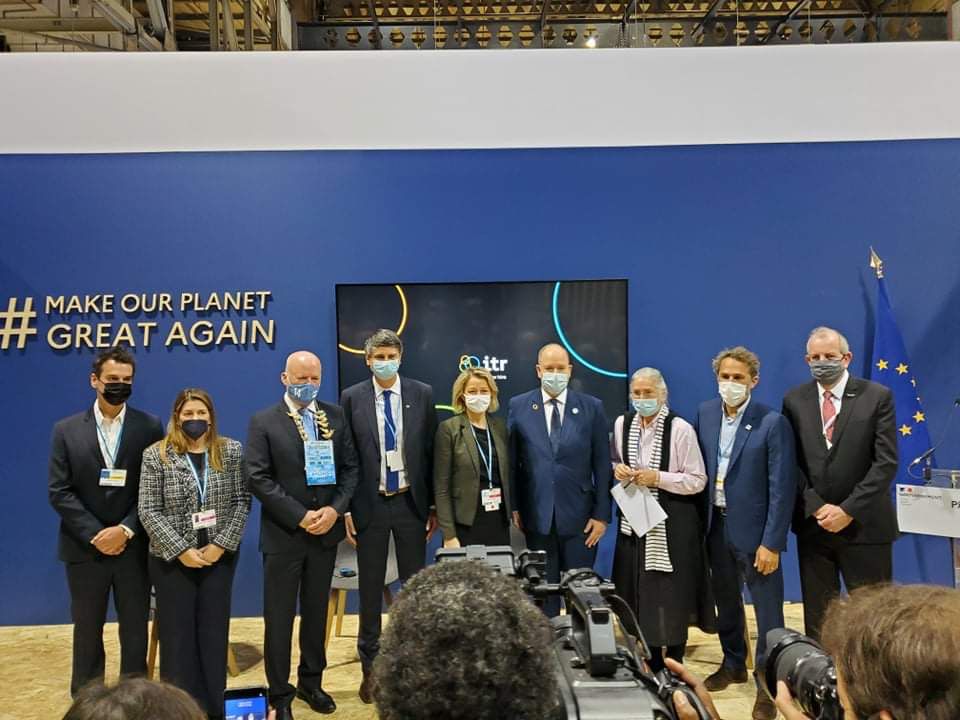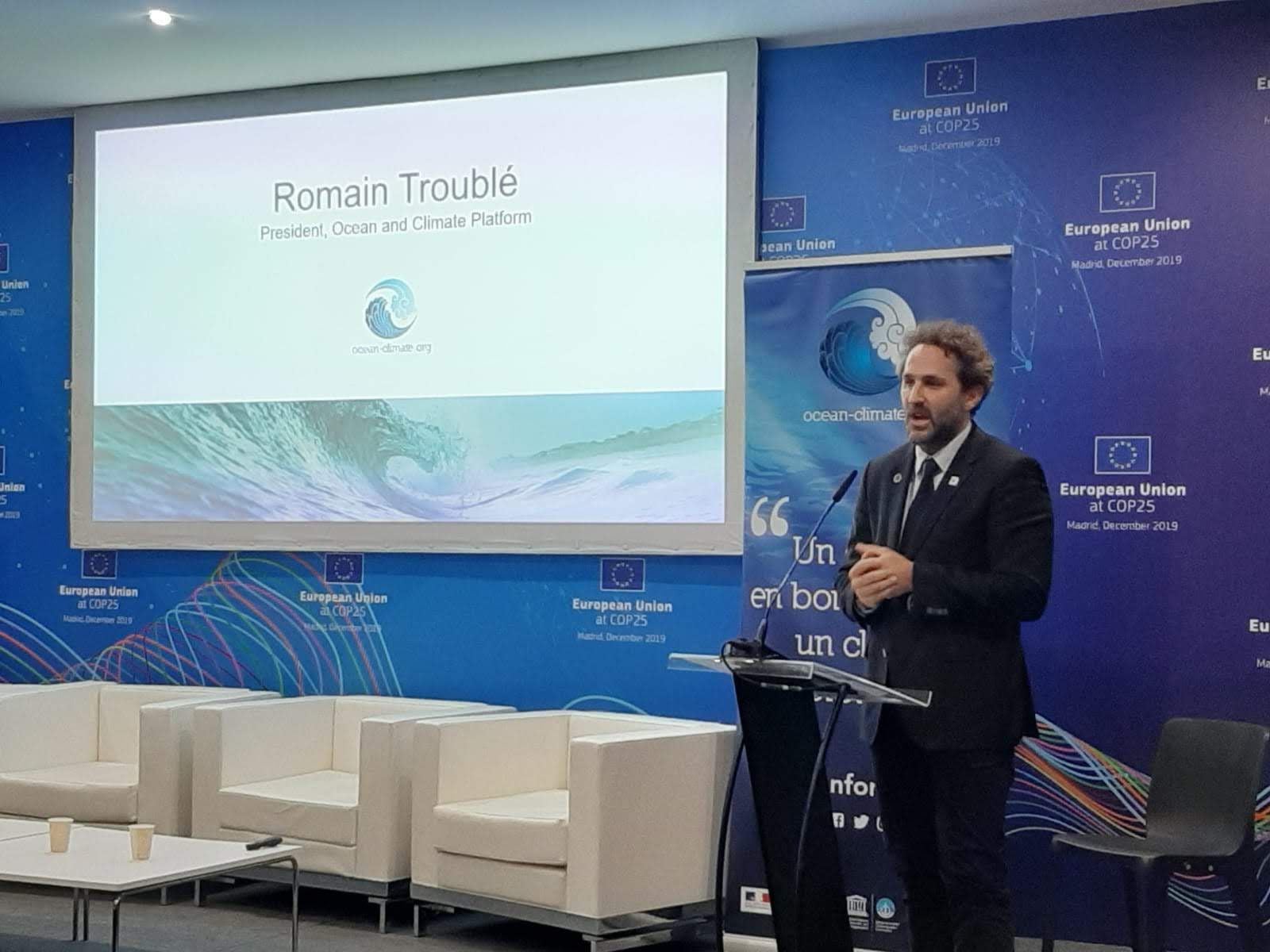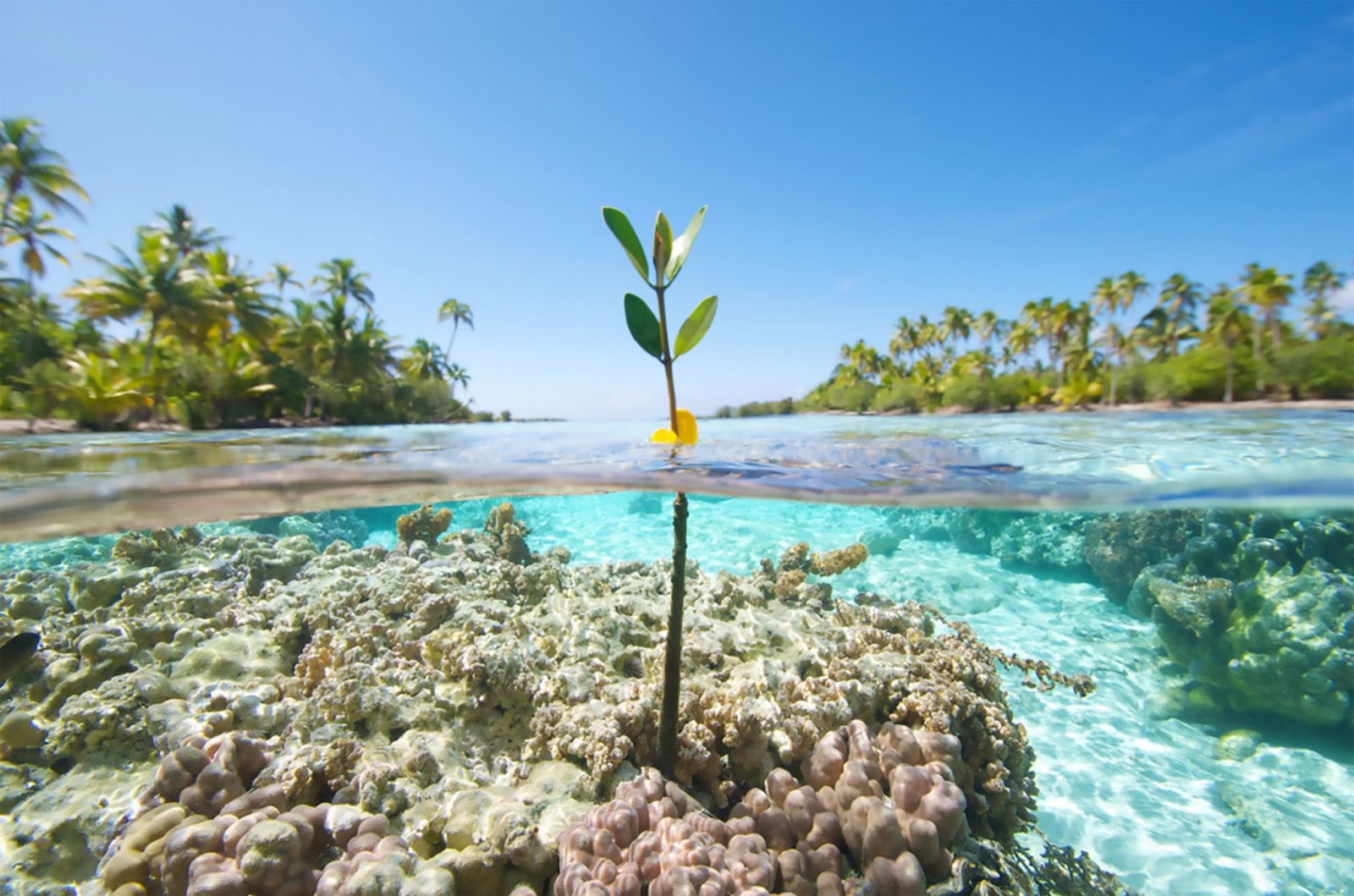[COP26] Making the Ocean our best ally in the fight against climate change
This Friday November 5, COP26 celebrates the Ocean Action Day in Glasgow, Scotland. Several networks of NGOs, foundations, development institutions and development agencies will present Ocean projects related to climate change.
Now more than ever, it is crucial to integrate the Ocean into the Climate agenda and to support marine biodiversity conservation initiatives in this large and complex edifice that are the Climate Change Conferences.

Friday, November 5
What is a COP?
COP means ‘Conference of Parties’. The Parties are the signatory states of the United Nations Framework Convention on Climate Change (UNFCCC), signed at the Earth Summit in Rio in 1992, meet. The objective of the UNFCCC is for States to implement actions to reduce their greenhouse gas emissions and adapt to climate change. The Climate COPs therefore represent a moment when all the signatories meet to define the objectives they want to achieve as well as the modalities of application and follow-up.
The slow integration of the Ocean in the discussions on climate change
When the Earth Summit announced the creation of the Climate Conference, the importance of marine ecosystems in the climate machine was barely mentioned. Land biodiversity issues were prevailing, sustainable development was essentially green. For society, marine ecology was about conservation programs for key species such as whales, turtles and bluefin tuna. Therefore issues that were very far from the Climate ones.
The planktonic ecosystem, which accounts for about 70% of marine life, was then totally absent. It is by far the largest ecosystem on the planet, but its fundamental role in climate regulation was barely acknowledged at the time. In the space of twenty years, the progress of science on what we call the microbiome of the Ocean, offers us a better understanding of the role of this “invisible majority” that we can commonly call plankton. It is these planktonic functions that the Tara Ocean Foundation seeks to explain during its missions. This ecosystem and its climatic functions must be integrated into international discussions and measures to protect the Ocean.
2014 : the launch of the Ocean and Climate Platform in France
When in 2014, a year before COP21, the civil society, including the Tara Ocean Foundation, launched the Ocean and Climate Platform in France, climate experts doubted the relevance of addressing Ocean issues in the construction of the future Paris Agreement. However, by demonstrating that the Ocean was already impacted by global warming, acidification and oxygen loss, marine specialists have allied themselves with small island states and provided additional arguments on the urgency of reaching an ambitious agreement.
COP21 in Paris: the Ocean is finally mentioned in a text on Climate
At COP21, the Ocean and Climate Platform already had more than 70 members and dozens of events and awareness campaigns were carried out, strengthening the mobilization that led to the Agreement. The inclusion of the word “Ocean” for the first time in a text on Climate, opened a new dialogue between the actors of Climate and those of marine biodiversity. In 2019, during COP25 in Madrid, designated as the “Blue COP” by the Chilean presidency, the number of events on the Ocean boomed, but real progress remained very partial. The Chilean minister and president of this COP25, Carolina Schmidt, declared that from now on, “all COPs will be blue”.

The Ocean at COP26: the Ocean takes root in the climatic discussions
For COP26, the situation is evolving differently and measures are taking shape. Meeting on October 31 in Glasgow, a group of heads of state and ministers unveiled the third “Because the Ocean” declaration on the Ocean and Climate. Launched in 2015 at COP21 in Paris, the initiative has been working since then to convince states to include concrete actions on the Ocean in their NDCs (Nationally Determined Contributions), the actions that states implement at the national level to achieve the goals set by the Paris Agreement. From now on 80 of the 120 national contributions submitted included actions to protect the Ocean.
The threat of “bluewashing” and the instrumentalization of “blue carbon”
The Ocean must be included in the UNFCCC’s decision-making processes and become a major ally in raising climate ambitions to levels that limit global warming to +1.5°C. Although the current complexity of the debates on the issues of financing, solidarity and the development of mechanisms for the future carbon market prevent the establishment of an agenda item dedicated to the Ocean, many fields of action linked to the Ocean are included in the climate change adaptation and mitigation agenda. Many marine ecosystems act as atmospheric carbon sinks, such as mangroves and seagrass beds, which fix billions of tons of CO2.
This carbon stored by marine ecosystems is called “blue carbon”. As states race to account for the carbon they avoid or capture, many of them want to include these physical and biological processes rendered by the Ocean for blue carbon sequestration into the positive tally of their carbon accounting.
This will to include blue carbon is still quite controversial, due to political difficulties, but primarily for scientific reasons: beyond coastal ecosystems, we do not yet have reliable models to estimate the tons of carbon buried into the vast global Ocean. Scientific work is evolving, and some groups and projects are even moving in encouraging directions.
Nevertheless, the first carbon offset mechanism imagined for forest ecosystems (REDD) has led to aberrations, financing unsustainable monospecific eucalyptus forests with catastrophic effects in terms of biodiversity, using the tonnage of carbon sequestered by the growth of the planted tree species as the only parameter. Thus, from a policy perspective, it is crucial to remain vigilant to ensure that Blue carbon is not being used in a way that could be considered as “bluewashing”.

The functions and services provided by the ocean must be taken into account
For the Tara Ocean Foundation, any blue carbon mechanism resulting from the COP26 results must be anchored on two pillars: climate and biodiversity. It is mandatory to integrate parameters that take into account ecosystem functions and services, and not just the tonnage of carbon captured, that we are still learning to quantify. A healthy Ocean biodiversity is essential to fight against climate change. The projects of Artificial fertilization of marine phytoplankton to boost the carbon pump have already proven themselves to be dangerous and are rejected by most scientists.
Faced with the challenges of our century, the most effective solutions are those offered by nature. Nature-based solutions are at the heart of the discussions at this COP and must provide positive outcomes for biodiversity and climate. Carbon sequestration, oxygen production, regulation of fish stocks, ecosystem services : the role of plankton is essential while it is just beginning to be understood, it must be better taken into account in these discussions. Understanding, predicting the impacts and protecting these tiny creatures must therefore be seen as a priority for ocean conservation, for the climate and for society.
By Andre Abreu, Head for international policy, and Martin Alessandrini, Advocacy project manager, Tara Ocean Foundation
